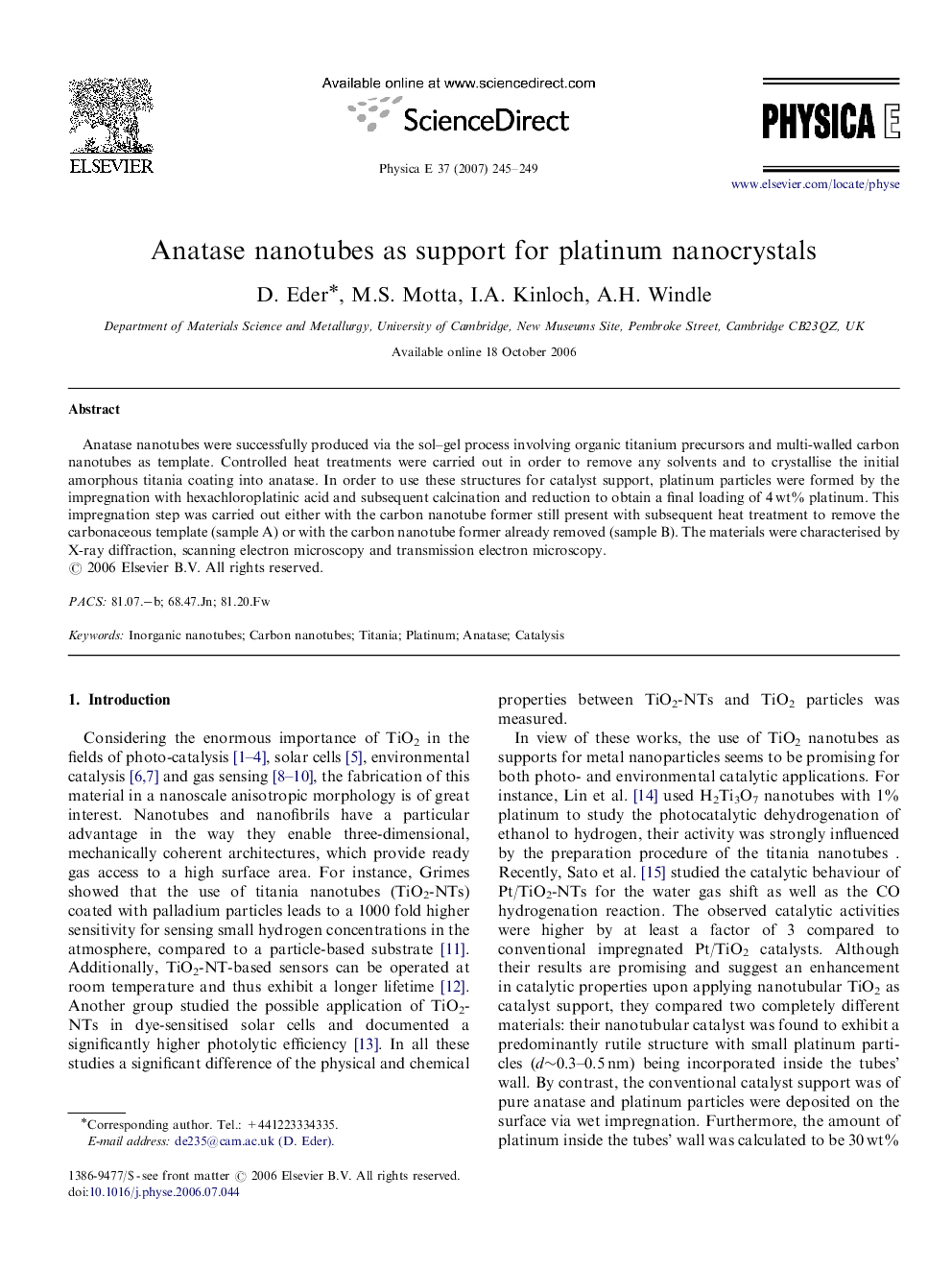| Article ID | Journal | Published Year | Pages | File Type |
|---|---|---|---|---|
| 1547233 | Physica E: Low-dimensional Systems and Nanostructures | 2007 | 5 Pages |
Anatase nanotubes were successfully produced via the sol–gel process involving organic titanium precursors and multi-walled carbon nanotubes as template. Controlled heat treatments were carried out in order to remove any solvents and to crystallise the initial amorphous titania coating into anatase. In order to use these structures for catalyst support, platinum particles were formed by the impregnation with hexachloroplatinic acid and subsequent calcination and reduction to obtain a final loading of 4 wt% platinum. This impregnation step was carried out either with the carbon nanotube former still present with subsequent heat treatment to remove the carbonaceous template (sample A) or with the carbon nanotube former already removed (sample B). The materials were characterised by X-ray diffraction, scanning electron microscopy and transmission electron microscopy.
